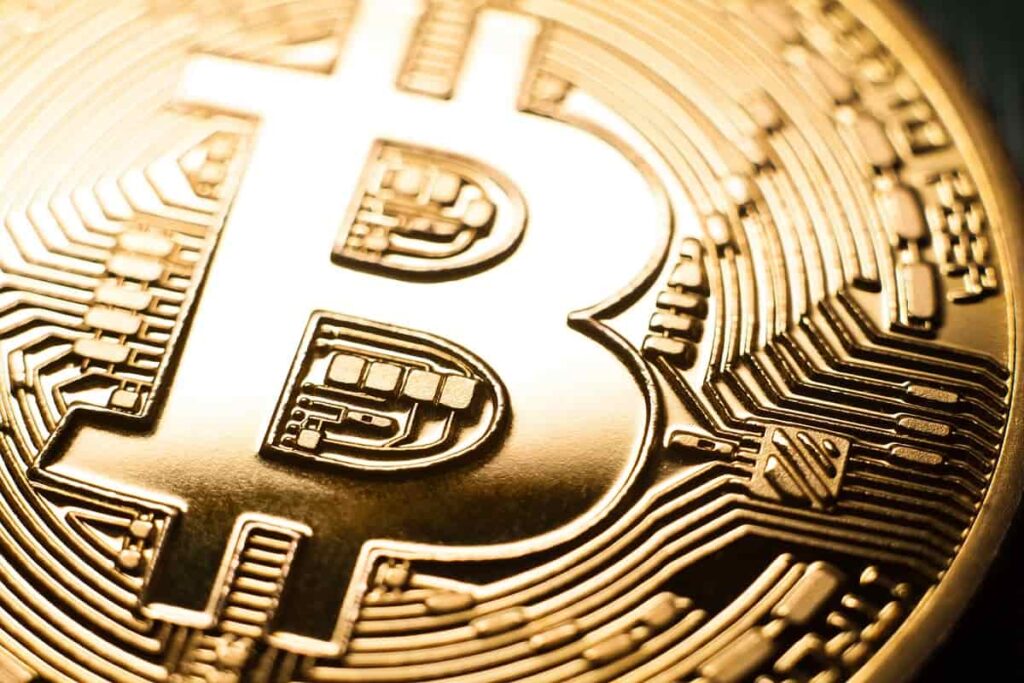When We Might Consider Buying Some Ether
Table of contents

Anybody who tells you money is the root of all evil doesn’t have any. That line was dropped by Ben Affleck in his iconic Boiler Room speech which epitomizes the alpha male drive for money which characterized investment banking environments at the time. Money may not buy happiness, but there’s a correlation between depression and poverty. There’s also a correlation between work ethic and wealth. The harder you work, the luckier you get.
On the streets, you should always fear someone who has nothing to lose, as their erratic behavior often defies common sense. That’s what you see in the investing world with meme stocks. Those who have real money become less concerned about making more of it, and more concerned with preserving it. The desire to preserve wealth increases as you age since you’ll soon need your wealth to fuel retirement.
Crypto as an Alternative Asset
The biggest tool investors have to preserve wealth is diversification across asset classes. Alternative assets like art and wine have only recently opened up to investors and provide mechanisms to store wealth that move independently of the financial markets. More traditional flight-to-quality assets like gold are now being challenged by the likes of cryptocurrencies such as bitcoin. That’s a good part of ARK Invest’s bullish bitcoin thesis on the biggest cryptocurrency out there with a market cap of around $830 billion.
The amount of dumb money flowing through the cryptocurrency world has inflated prices, resulting in even more dumb money suffering from the house money effect. It’s hard to think of a riskier place to park your money right now, and that’s why only 1.3% of our assets under management can be found in bitcoin.

Our recent piece on Why a Bitcoin Crash May Be Imminent highlighted the systemic risk associated with Tether which doesn’t just threaten bitcoin but possibly the entire U.S. financial system (per Janet Yellen). In response, one subscriber suggested we consider investing half our bitcoin money in the world’s second biggest cryptocurrency, Ether. Sounds like a solid plan, so what’s the difference between Bitcoin and Ethereum?
Editor’s note: Ether is a cryptocurrency that’s used on the Ethereum platform. Yes, we know it’s a mortal sin to use the two words interchangeably, but most our readers don’t care about the distinction, so please just let us suffer in sin.
Bitcoin vs. Ether
Bitcoin is a store of value that only acts as such because people allow it to. The bears point to greater fool theory, while the bulls point to the U.S. dollar as sharing similar characteristics. Of course, the U.S. dollar is widely accepted in nearly every country by nearly every person, while bitcoin ATMs struggle to perform the most basic transactions using an infrastructure that wasn’t built for transactions.
Bitcoin processes 7 transactions per second whereas Visa processes around 1,700 transactions per second on average. Enter the crypto trilemma which proposes that a decentralized network that sticks it to the man can’t be both secure and scalable. Here are the options:
- Decentralized and scalable with poor security
- Decentralized and secure but unable to scale
- Centralized, secure, and scalable
That last bullet point is the system we have today which works quite well. Whatever value society ascribes to bitcoin is the extent of its usefulness.
Then there’s the Ethereum network which can process 15 to 30 transactions a second, depending on who you talk to. Since there’s a high demand for this limited capacity, transaction fees (also called gas fees) are ludicrous, something the ConstitutionDAO folks found out the hard way when their average $230 donation lost at least half its value when they were charged gas fees of $60 both ways in a best case scenario. Perhaps what’s most exciting about Ethereum is that it supports smart contracts, a use case where blockchain might actually create a great deal of value. The big unknown for Ethereum right now is Ethereum 2.0. It’s equal parts exciting and scary.
Ethereum 2.0
There is nothing in the world more helpless and irresponsible and depraved than a man in the depths of an ether binge.
Credit: Hunter S. Thompson
In order to solve the transaction problem, an opensource development effort is underway to change the way Ethereum works so that it can potentially scale to 100,000 transactions per second or more. (The explanation as to how this will be accomplished is equal parts technical and boring.) The second big change will be to move from “proof of work” to “proof of stake.” Instead of having extremely powerful computers using electricity to mine ether by solving complex problems, people who hold ether can simply generate more of it depending on the amount they hold.
The explanation isn’t so important as the end result – faster transactions, lower fees, and 99.95% less electricity used. The Ethereum 2.0 release will be going out in phases with the big stuff happening this summer. If it’s like any other software project, expect the dates to slip and the functionality to be less than promised.
If you’re someone who works in enterprise software development, you’ll understand just how incredibly difficult Ethereum 2.0 will be to pull off without a hitch. From an article by Fortune on the topic:
It’s Ethereum’s most significant update ever, but it’s not without critics. Moving to the POS model will lower miner revenue by between 20% and 35%, according to some estimates. And there are fears that the changes to Ethereum’s incentive model could push disgruntled miners to leave the network, try to sabotage it, or start a competing chain.
It’s almost hard to read with a straight face. Is the world’s second-biggest cryptocurrency that unpredictable? All you bitcoin mining stock bulls might want to think long and hard about your thesis if the community can suddenly decide it doesn’t need your mining efforts anymore because they want to reduce electricity consumption by 99.95% to appease the ESG types.
Think about what this sounds like to someone whose sacred cow has been built on the Ethereum platform. They’re left wondering if the coming release will ruin the last several years spent working 80-hour weeks trying to build a business. If Ether/Ethereum suddenly implodes, it may take others down with it.
The Correlation Problem
Before we talk about diversification, we need to talk about correlation – the extent to which two assets behave in a similar fashion. If you’re holding two stocks that always move in unison, the only diversification effect you’re getting by holding both is that company-specific risk is halved. If one company pulls an Enron, you still have half your money, all things being equal.
So, how similar do the price movements of Bitcoin and Ether mimic each other? Erik Norland of CME Group spent many hours putting together a phenomenal piece on the topic, so we’ll briefly give him credit for it and then leverage his hard work for our own audience as any good MBA would do. Here’s what he concluded:
- Bitcoin’s price tends to follow its cost-per-transaction and its volume of trades
- Ethereum prices have a close correlation to bitcoin, but have seen even higher volatility
Of course, correlations change over time, so he provided this handy chart which shows just that.

For all you people out there not sleeping well at night because your paper money is evaporating before your eyes, fear not. It’s just part of the normal cycle of volatility according to the below chart.

To conclude, diversifying our bitcoin investment makes little sense if the entire lot of cryptocurrencies are highly correlated. Even if cryptocurrencies aren’t correlated, it’s still difficult to find an easy low-risk low-fee way to diversity.
The Diversification Problem
If it’s the next Microsoft, all I need is a little. If it’s not, I’m glad I only invested a little.
If bitcoin fanatics like Michael Saylor are right and bitcoin jumps +2,500% over today’s price, that means our little 1.3% investment would balloon to nearly 25% of our portfolio (we’d start slowly trimming at 10%). But if the most popular cryptocurrency out there proves to be an abject failure for any number of reasons, then it’s likely some other cryptocurrency will take its place.
There are an increasing number of ways to diversify your cryptocurrency exposure such as funds like CRYPTO20 which charge a reasonable 50 basis points (0.50%) for exposure to a basket of cryptocurrencies whose weightings adjust based on market cap movements. We have two problems with that approach, the first being some of the names included.

We couldn’t care less about Dogecoin’s price movements as the Robinhood FOMO YOLO apes trade it without the slightest clue that this $23 billion joke started out as a joke. We have even less desire to have exposure to Shiba Inu coin which is a joke of a joke worth $18 billion. At least have some criteria that filters out the garbage. Our second point of contention surrounds the need to invoke some third party to trade the thing. Either make it accessible as a token on Coinbase – a firm we trust – or have it trade on normal equity exchanges.
Conclusion
Self-made wealth teaches you the value of money. People who work hard for their money don’t want to piss it away on volatile cryptocurrencies with no intrinsic value. Any fear of missing out we might have is easily surpassed by our fear of investing in something that’s extremely volatile and that few people can sufficiently explain.
When Ethereum 2.0 goes live, we’ll see if it lives up to its promises and consider diversifying our bitcoin exposure a bit by buying some ether. We’ll also be watching for ways to get diversified crypto exposure that doesn’t use a spray-and-pray approach which includes some downright junk.
Sign up to our newsletter to get more of our great research delivered straight to your inbox!
Nanalyze Weekly includes useful insights written by our team of underpaid MBAs, research on new disruptive technology stocks flying under the radar, and summaries of our recent research. Always 100% free.















I think now is a great time to buy some Ethereum at a price close to $3,000. If you wait for Ethereum 2.0 goes live you will pay twice as much ($6,000) or more ..
Ethereum 2.0 comes with as much potential downside as it does upside. Uncertainty equals risk and we try to avoid risk as much as possible.
21shares also has diversified crypto exposure in their crypto basket (without the junk), they basically buy the crypto for you and you can buy a share in it as the equivalent of an ETF on brokers in Europe. Basically saves you the hassle of having to buy the coins yourself and you can pay them a pretty high fee of 1.5-2.5% for it.
Thank you for the heads up Dan. We’ll check it out.
“We could care less about Dogecoin’s price movements”
You mean you *Couldn’t care less? As saying you could care less indicates you still care a bit, as opposed to not at all.
Yes, i know. Pandantic.
Thomas, you’re absolutely right. The author didn’t even think about that and they’ve been writing for many moons. Corrected. Yet again, we learn something useful from our astute readers.
Great insight as usual from Nanalyze. Has anyone noticed how it is correlating to the market ups and downs? If it’s a hedge against inflation it sure doesn’t seem to be acting like it right now.
Thank you for that Gavin. We’ve seen the correlation sit at around 30-33 for bitcoin but that does seem to be changing. From an article by Barron’s six days ago: “Crypto is now more closely tied to stocks than gold, investment-grade bonds, and major currencies, implying that its diversification benefits have largely vanished.”
Ethereum reached the low $880 on June 18th and now in early August it is $1660.
So that means +88% jump in just 1.5 month.
Coming soon: the next step in the Ethereum upgrade (change to Proof-of-Stake) is the Ethereum merge date. Based on the latest scheduling, the Ethereum merge will happen on September 19th, 2022.
From Reuters: “Ether is both highly correlated with bitcoin and more volatile than bitcoin. To borrow the lingo of equity markets, this makes ether a high beta version of bitcoin.”
I’m convinced Ether will gain significantly against dollar and bitcoin after successful upgrade to POS.
It is already climbing ahead of merge date next month. Current price: around $1,900 and 0.08 of Bitcoin.
My expectation: over $3,000 and over 0.12 of bitcoin. Let’s wait and see how it goes in the next couple of months.
When there are a lot of quality names on sale in the stock market it’s hard to start throwing money into crypto.
In a recent post, the Ethereum community illustrated the dramatic change in the amount of ETH issuance after the merge.
“Mining rewards ~13,000 ETH/day pre-merge.
Staking rewards ~1,600 ETH/day pre-merge.
After the merge, only the ~1,600 ETH per day will remain, dropping total new ETH issuance by ~90%.
The burn: at an average gas price of at least 16 gwei, at least 1,600 ETH is burned every day, which effectively brings net ETH inflation to zero or less post-merge.”
Such a dramatic change for a cryptocurrency means nobody knows what to expect. So the idea is that now many more applications can be built on the ETH platform but how will that influence prices?
Ethereum’s Shanghai hard fork, also referred to as “Shapella,” has been finalized, enabling withdrawals for users who have “staked” their ether (ETH) to secure and validate transactions on the blockchain.
Crypto is pretty low on our list of priorities, but we might take another look at this down the road.